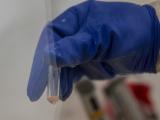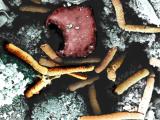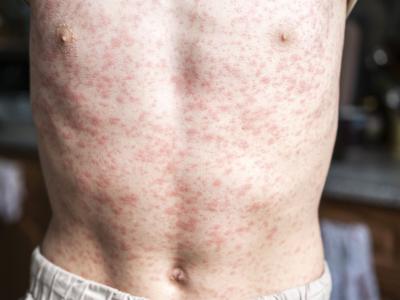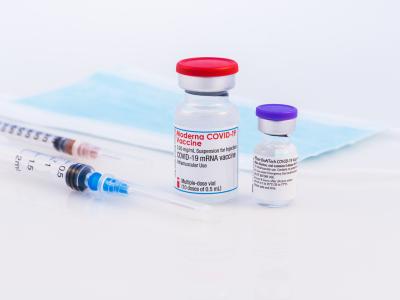Feb 12, 2002 (CIDRAP News) An anthrax vaccine made by combining a component of the anthrax toxin with killed anthrax spores has been tested successfully in animals, according to a report in the February issue of Infection and Immunity. The report suggests that a similar vaccine for humans could be safer and more effective than the acellular vaccine now in use.
The vaccine consists of anthrax protective antigen (PA, one of three components of the anthrax toxin) and formaldehyde-inactivated spores (FIS). It provided mice and guinea pigs with 100% protection against large doses of anthrax spores, according to the report by Fabien Brossier and colleagues at the Pasteur Institute in Paris.
The human vaccine now in use, consisting of anthrax PA, requires several doses and causes some side effects. Further, it appears to be less efficient than the existing veterinary vaccine, which is made of live spores of a weakened anthrax strain, according to a Pasteur Institute news release. The live attenuated vaccine is unsuitable for humans because of toxic side effects, the release says.
The existing human vaccine acts against the anthrax toxin but does not block the multiplication of anthrax bacilli, according to the Pasteur team. Thus they designed a vaccine to target both toxemia and septicemia. They used PA and killed spores of a genetically detoxified variant of the Sterne strain, the strain used in the veterinary vaccine. Mice and guinea pigs were vaccinated with either PA alone, PA and FIS, or FIS alone, and then were exposed to heavy doses of virulent anthrax spores.
Guinea pigs protected with PA alone or FIS alone were poorly protected: only 2 of 9 animals with PA alone and 1 of 4 animals with FIS alone survived. Guinea pigs that received the combination vaccine were protected in a dose-dependent manner. Three of 5 animals that were injected with PA plus 105 FIS survived, and protection increased to 100% with vaccines consisting of PA plus 107 FIS and of PA plus 108 FIS (5 of 5 and 9 of 9 animals, respectively). The differences in survival between both of the single-component vaccines and the combined vaccine were significant (P<.05 or lower).
Results were generally similar in mice, which were challenged with two anthrax strains17JB, a laboratory strain, and 9602, a more virulent wild-type strain. For the 17JB challenge, 3 of 6 mice vaccinated with PA alone survived, as did 2 of 6 mice vaccinated with FIS alone, but all 6 mice treated with PA plus 108 FIS survived. For the 9602 challenge, there were no survivors among 18 mice protected with PA alone and 12 mice protected with FIS alone, but all 24 mice on the combination vaccine survived (P<.01).
The researchers also found that both guinea pigs and mice showed significant levels of serum antibodies against PA and spore antigens. To determine if the 100% protection seen with the combination vaccine was a result of activity against toxemia alone, they measured the neutralizing activities of sera from mice immunized with PA alone and sera from mice treated with the combined vaccine. They found that the toxin-neutralizing activity of the combination-vaccine pool was no higher than that of the PA pool. Thus they conclude, "The effect of spores on protective immunity is therefore not a consequence of greater neutralization of toxin activity." Because the animals showed an antibody response to spore antigens, the authors add, "The improved protection may be a consequence of the response to these antigens, as has been proposed for live spore vaccines."
To further test the contribution of killed spores to immunity, the authors constructed a PA-deficient variant of strain 9602 (by making a deletion in the gene that encodes PA) and challenged guinea pigs and mice with it. Immunization with PA alone did not protect any of the animals, whereas immunization with FIS protected 5 of 5 guinea pigs and 3 of 6 mice. Mice were far more sensitive to strain 9602P than guinea pigs were.
The researchers conclude that "inclusion of killed spores greatly enhances the protective efficacy of a PA-based vaccine. Immunization with FIS plus PA provides a synergistic protective immunity acting on both toxemia and infection. The immune response induced by FIS may act early by blocking germination, a critical step at the onset of pathogen multiplication." They add that their results "may serve as the basis for the first design, for human use, of a subunit vaccine as protective as the current live veterinary vaccine."
Brossier F, Levy M, Mock M. Anthrax spores make an essential contribution to vaccine efficacy. Infect Immun 2002;70(2):661-4
Abstract


















